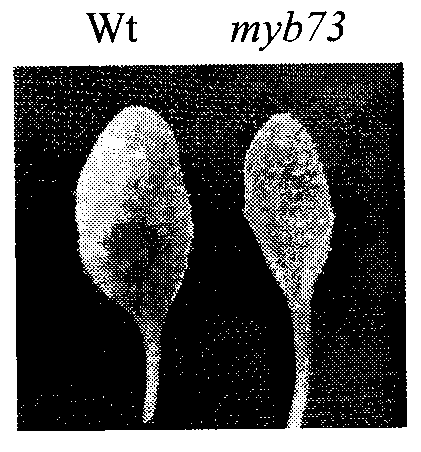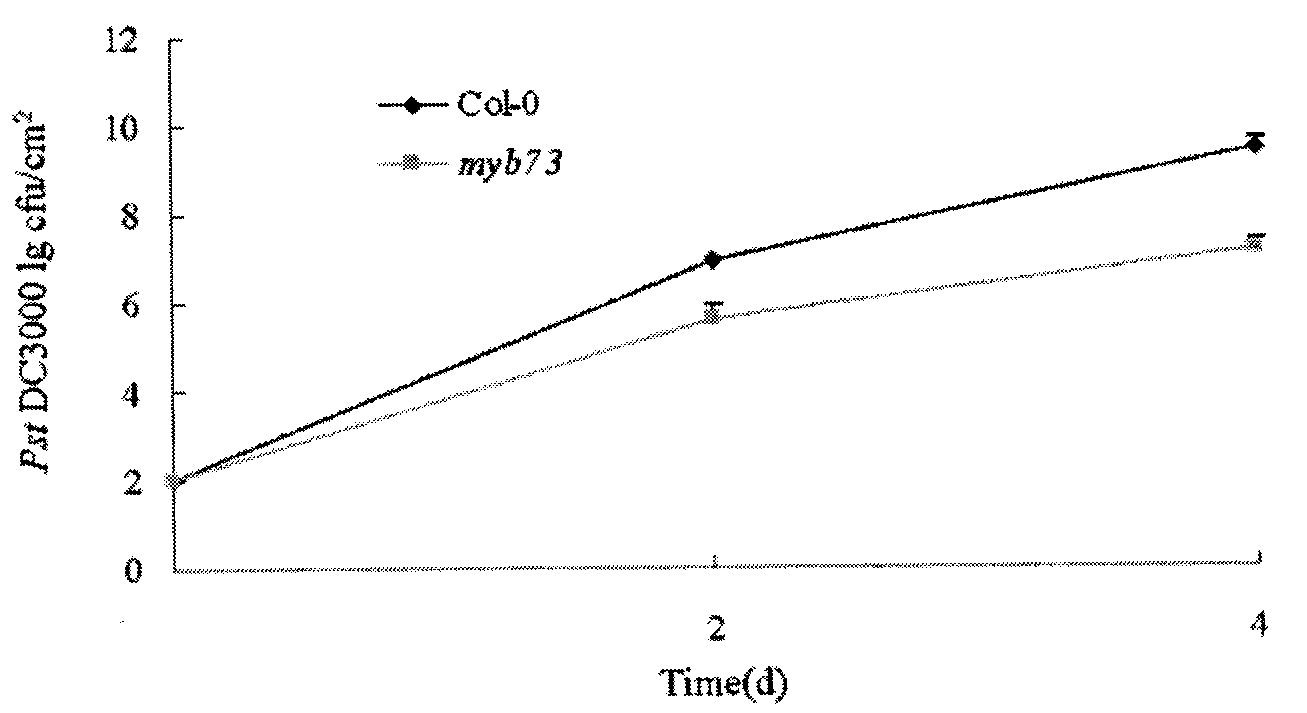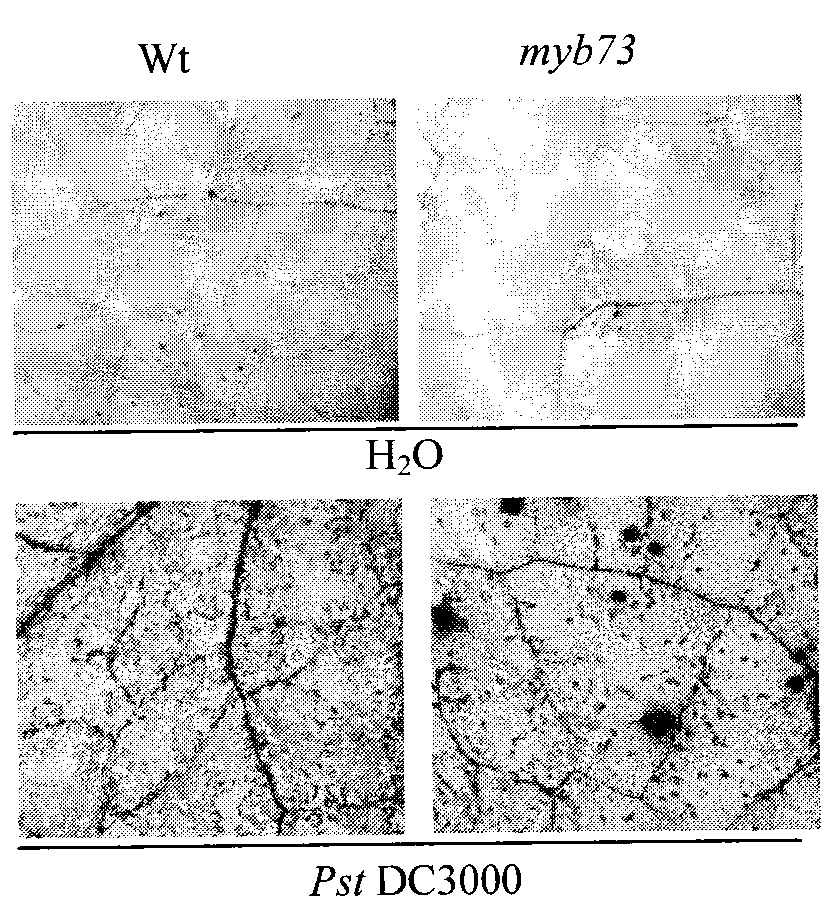Application of Arabidopsis gene MYB73 on the aspect of plant sclerotinia sclerotiorum proof disease
A technology of transgenic plants, Arabidopsis thaliana, applied in the field of application of the gene MYB73 in cultivating transgenic plant varieties resistant to Sclerotinia sclerotiorum, can solve problems such as unreported
- Summary
- Abstract
- Description
- Claims
- Application Information
AI Technical Summary
Problems solved by technology
Method used
Image
Examples
Embodiment 1
[0031] Screening and analysis of disease resistance mutants of Arabidopsis thaliana
[0032] In order to obtain disease-resistant mutants, 4-week-old Arabidopsis thaliana was inoculated with Pseudomonas syringae (Pst DC3000) for 1.5 hours, and the genes whose expression changed were analyzed by gene chip technology, and the corresponding genes were obtained in the Arabidopsis ABRC library. Homozygous mutants of the gene, the inventors found that the disease-resistant mutant myb73 ( figure 1 ), after 4 days of inoculation, the number of pathogenic bacteria in the wild type Arabidopsis was 100 times that of the mutant ( figure 2 ), using the Trypan Blue staining method, it was found that a large area of necrotic lesions appeared on the wild type after 2 days of inoculation, while the necrotic area of the mutant leaves was significantly less than that of the wild type ( image 3 ), using the DAB staining method, it was found that a large amount of callose was produced on th...
Embodiment 2
[0034] Expression analysis of disease resistance-related genes
[0035] After Pst DC3000 was inoculated with wild-type Arabidopsis thaliana for 0, 0.5, 1.5, 4, and 12 hours, it was found that the expression of MYB73 gene was significantly down-regulated after inoculation ( Figure 6 ), and decreased to the minimum at 1.5h, which indicated that the MYB73 gene played a negative regulatory role in the process of Arabidopsis resistance to Pst DC3000. .2 The expression of the gene reaches the maximum at 1.5 hours after inoculation ( Figure 7 ), the expression of PR1 gene increased significantly at 0.5h after inoculation, and remained at a fairly high level at 1.5h ( Figure 8 ), which indicated that MYB73 gene was negatively correlated with the expression of disease resistance-related genes PR1 and PDF1.2.
Embodiment 3
[0037] Phenotype analysis of MYB73 gene overexpression mutants
[0038] The CDS region of the MYB73 gene was first cloned on the pMD-19 simple vector, then the CDS region of the MYB73 gene was excised using Xba I and BamH I, and the CDS region of the MYB73 gene was connected to the vector pCAMBIA1300 using Xba I and BamH I Between Xba I and BamH I restriction sites. The vector contains the CaMV 35S promoter, which can drive the overexpression of the target gene. The pCAMBIA1300 vector containing the CDS region of the MYB73 gene was transformed into Arabidopsis thaliana by the method of Agrobacterium dipping flowers. The overexpressed myb73 strains, mutants and wild-type Arabidopsis were cultured for 4 weeks under long-day sunlight, and the Pst DC3000 strain was inoculated with a needle-free syringe for 3 days, and the disease was observed. The results were as follows: Figure 9 As shown, the inoculated leaves of wild-type Arabidopsis and overexpression mutants showed obvious...
PUM
 Login to View More
Login to View More Abstract
Description
Claims
Application Information
 Login to View More
Login to View More - Generate Ideas
- Intellectual Property
- Life Sciences
- Materials
- Tech Scout
- Unparalleled Data Quality
- Higher Quality Content
- 60% Fewer Hallucinations
Browse by: Latest US Patents, China's latest patents, Technical Efficacy Thesaurus, Application Domain, Technology Topic, Popular Technical Reports.
© 2025 PatSnap. All rights reserved.Legal|Privacy policy|Modern Slavery Act Transparency Statement|Sitemap|About US| Contact US: help@patsnap.com



